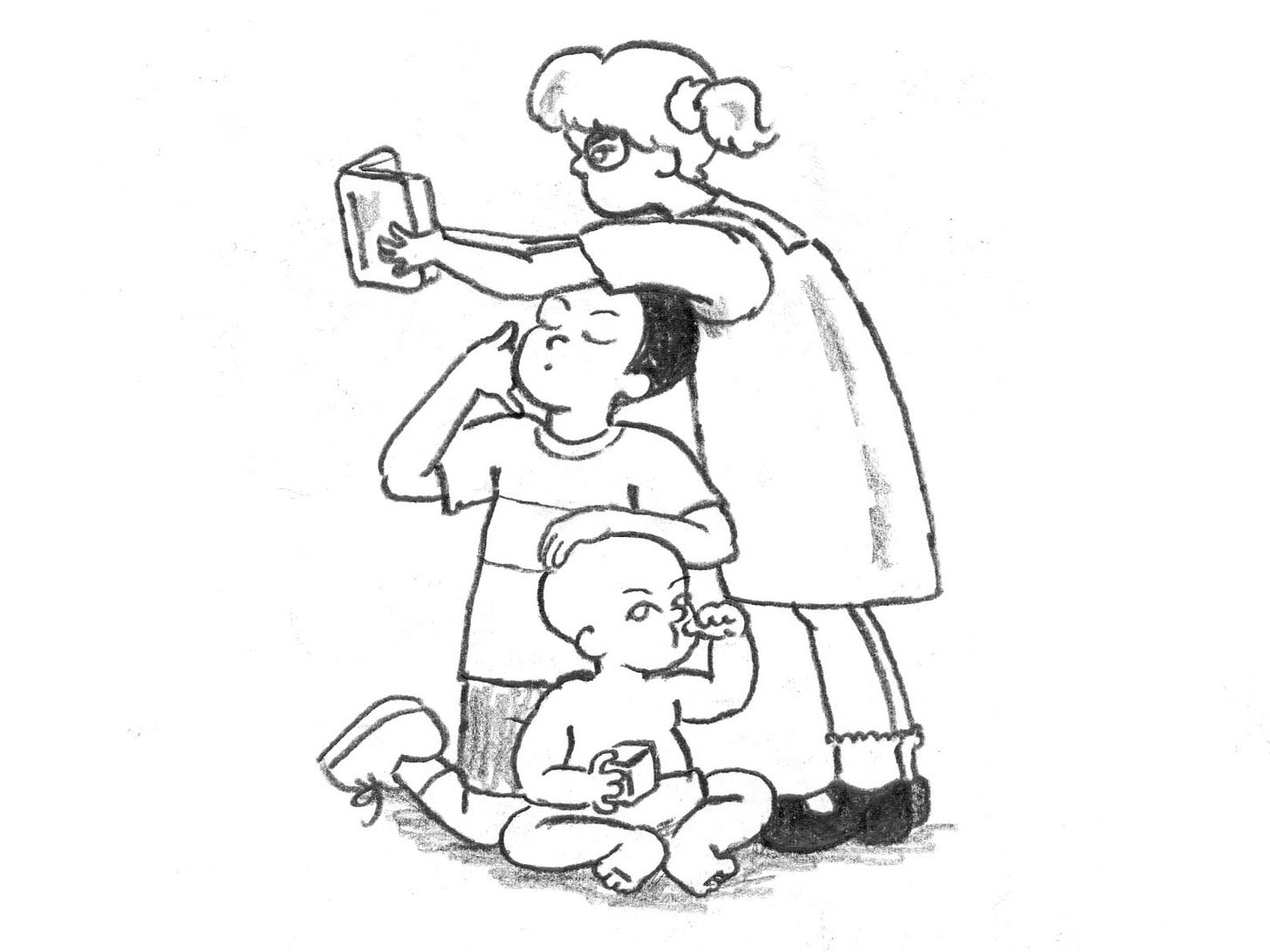Hey all,
Welcome to Human Nature, the illustrated psychology newsletter.
When we talk about child development, most of us probably think about developmental stages. For example, in the previous article, we touched upon Erikson’s stages of psychosocial development. There exist many theories of child development, but because it is such a complex subject, no single theory can account for every aspect of it. In this final article of the series, we’re going to examine one particularly influential theory in more detail: Piaget’s stages of cognitive development.
Piaget’s stages of development
Piaget’s theory of cognitive development is one of the most comprehensive and famous theories of child development of all time. Its longevity can be attributed to its acknowledgment of the interaction nature and nurture a well as its description of both continuous and discontinuous aspects of development.
Child development can be divided into two broad categories: cognitive and social. Piaget’s theory focuses on cognitive development, that is to say the formation of abilities like language, memory, conceptualising space and time, problem solving and scientific reasoning.
One of the central tenets of Piaget’s theory is the “child as scientist”. Piaget believed that children have an intrinsic motivation to learn and to apply new capabilities as often as they can.
Piaget argued that development involved both continuous and discontinuous aspects. He thought that development was characterised by three continuous processes that happen throughout our lives: assimilation, accommodation and equilibration.
Assimilation: The incorporation of new information into existing concepts.
Accommodation: The adaptation of existing concepts in response to new information and experiences.
Equilibration: The integration of information from the two previous phases to create a more balanced and nuanced view of the world.
But Piaget is most famous for his description of the discontinuous side of development, which are the stages of cognitive development that he proposed. Piaget’s biggest assertion was that the stages are qualitatively distinct, meaning that the nature of children’s perception and thinking is fundamentally different from one stage to another. He also proposed that everyone goes through them in the same order and never skips a stage, but that there are brief transitional phases in between stages where children go back and forth between two types of thinking.
Sensorimotor stage (0-2 years): This is the stage in which the infant’s intelligence develops through sensory and motor skills. During this phase, infants gain information about the world around them by using reflexes such as grasping and sucking and by manipulating objects, which helps them form basic concepts about time, space and causality.
Children at this stage are very much in the here and now. For example, Piaget (1954) proposed that up until 8 months old, infants lack object permanence—when an object the infant is reaching for is hidden, the infant stops searching for it. It’s as if the object never existed.
Towards the end of the sensorimotor stage, infants’ memory develops and they gain a new capability called deferred imitation, whereby they’re able to repeat behaviour they’ve seen several minutes, hours or even days ago (Piaget, 1951).
Preoperational stage (2-7 years): In this stage, children’s thinking becomes more sophisticated as their cognitive skills develop, but still faces fundamental limitations. Children in the preoperational stage gain the capacity for symbolic representation: a banana becomes a phone, a broom becomes a horse, etc.
However, children at this stage still have trouble seeing things from other people’s perspective, or understanding that other people have a different perspective altogether. This is called egocentrism. For instance, a 4 year old doesn’t understand that the three mountains on the table in front of them look different from the other side (Piaget & Inhelder, 1955).
Another limitation children have at the preoperational stage is centration, which is when they focus on one particular characteristic of an object at the expense of the whole. This is illustrated by the conservation concept—when a 5 to 8 year old sees a liquid being poured from a wide cup to a narrow cup, they think that the amount of liquid has increased because it appears higher (Piaget, 1952).
Concrete operational stage (7-12 years): This is the stage in which children become able to reason logically about concrete objects. For example, they are able to understand the principle of conservation described above. However, they are still incapable of pure abstract thought and generally can’t devise experiments to test their beliefs.
Formal operational stage (12 years and onwards): At the final stage of development, on top of their logical reasoning abilities, children also become capable of thinking in abstract terms and imagining purely hypothetical situations. This is generally when children become interested in science fiction as they begin to entertain the possibility of realities other than their own. Importantly, Piaget thought that not everyone reaches this stage, but that those who do reach it benefit greatly from it as they become capable of envisioning different ways the world could be and think more deeply about questions like truth, justice and ethics.
This concludes our series on developmental psychology. Like in every other series of Human Nature, we have barely scratched the surface of the colossal topic that is child development. So if you are interested in learning more, a good resource is the textbook I have been consulting to write these articles: How Children Develop by Robert S. Siegler, Judy S. DeLoache, Nancy Eisenberg.
Thank you for reading and see you next time.
Sources:
De la logique de l'enfant à la logique de l'adolescent (Piaget & Inhelder, 1955).
De la Psychologie génétique à l'Epistémologie (Piaget, 1952).
How Children Develop (Robert S. Siegler, Judy S. DeLoache, Nancy Eisenberg, 2010).
Pensée Egocentrique et Pensée Sociocentrique (Piaget, 1951).





